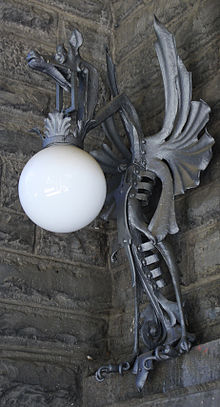
Giuseppe Sommaruga (1867–1917) was an Italian architect of the Liberty style or Art Nouveau movement. He was the pupil of Camillo Boito and Luca Beltrami to the Brera Academy in Milan. His monumental architecture exerted some influence on the futurist architect Antonio Sant'Elia.

Villas and palaces in Milan are used to indicate public and private buildings in Milan of particular artistic and architectural value. The lack of a royal court did not give Milan the prerequisites for a significant development of building construction; nevertheless it contains architectural works from different eras and different styles: from Romanesque to neo-Gothic, from Baroque to eclectic, from Italian twentieth century to rationalism.
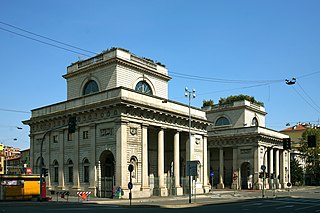
Porta Venezia is one of the historical gates of the city of Milan, Italy. In its present form, the gate dates back to the 19th century; nevertheless, its origins can be traced back to the medieval and even the Roman walls of the city.

Palazzo Castiglioni is an Art Nouveau palace of Milan, northern Italy. It was designed by Giuseppe Sommaruga in the Liberty style and built between 1901 and 1903. The rusticated blocks of the basement imitate a natural rocky shape, while the rest of the decorations are inspired by 18th century stuccos. The building is now used as the seat of the Unione Commercianti di Milano.

Casa Campanini is an Art Nouveau building in Milan, Italy, located at 11, Via Bellini. It was completed between 1903 and 1906 by architect Alfredo Campanini, who later inhabited the building.

The Zone 1 of Milan, since 2016 officially Municipality 1 of Milan, is one of the 9 administrative divisions of Milan, Italy.

Neoclassical architecture in Milan encompasses the main artistic movement from about 1750 to 1850 in this northern Italian city. From the final years of the reign of Maria Theresa of Austria, through the Napoleonic Kingdom of Italy and the European Restoration, Milan was in the forefront of a strong cultural and economic renaissance in which Neoclassicism was the dominant style, creating in Milan some of the most influential works in this style in Italy and across Europe. Notable developments include construction of the Teatro alla Scala, the restyled Royal Palace, and the Brera institutions including the Academy of Fine Arts, the Braidense Library and the Brera Astronomical Observatory. Neoclassicism also led to the development of monumental city gates, new squares and boulevards, as well as public gardens and private mansions. Latterly, two churches, San Tomaso in Terramara and San Carlo al Corso, were completed in Neoclassical style before the period came to an end in the late 1830s.
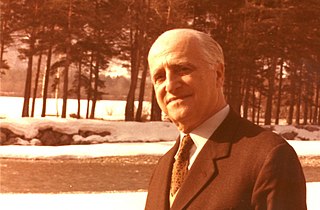
Luigi "Gino" Levi-Montalcini was an Italian architect and designer.

The Villa Mariani is located at 5 Via Fontana Vecchia in Bordighera on the Riviera in the province of Imperia, in northern Italy near the French border.

Eugenio Quarti (1867-1929) was an Italian furniture maker called "the goldsmith of furniture makers".

Casa Guazzoni is a building at via Malpighi 12 in Milan in the Liberty style, or Italian Art Nouveau.

Eugenio Soncini was an Italian architect.

Giuseppe Palanti was an Italian painter, illustrator, and urban planner, best known for his portraits, notably of Mussolini and Pius XI. He had a long collaboration with Teatro alla Scala in Milan, creating costume, set design and advertising material for multiple opera productions. He was also a major contributor towards the development of the seaside resort Milano Marittima.
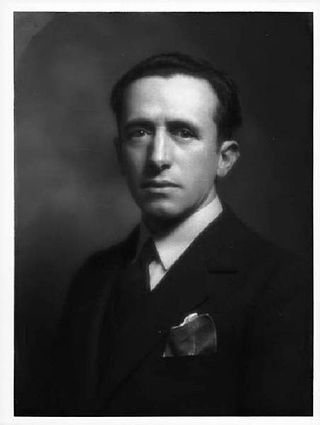
Giovanni Greppi was an Italian architect best known for having designed some of the most famous military shrines in Italy.

Art Nouveau in Milan indicates the spread of such artistic style in the city of Milan between the early years of the 20th century and the outbreak of the First World War. In the Lombard capital, art nouveau, called StileLiberty in Italian, found—thanks to its close relationship with the rampant industrial bourgeoisie of the time—a fertile ground for its rapid development, during which it oscillated between the influences of French Art Nouveau, German Jugendstil and eclecticism.

Villa Romeo Faccanoni is an Liberty style house located on Via Michelangelo Buonarroti #48 in the city of Milan, region of Lombardy, Italy. The three-story house, surrounded by a small garden, was designed by Giuseppe Sommaruga and built between 1912 and 1914. The expanded building now serves as the offices of the Clinica Columbus, with added surrounding clinic buildings erected in the former gardens.
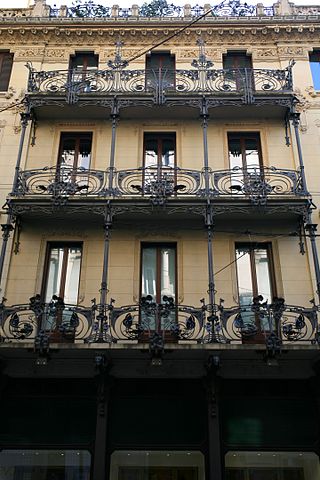
Casa Ferrario is a historic Art Nouveau building located on via Spadari #3-5 in Milan, Italy.

Art Nouveau, in Turin, spread in the early twentieth century.
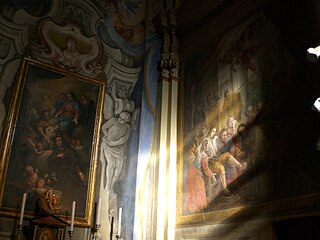
Although it has been characterized in recent centuries as an essentially industrial city, Busto Arsizio counts among its most valuable buildings the numerous monuments of an ecclesiastical nature, testifying to the deep religiosity of its people. Of particular note are the Sanctuary of Santa Maria di Piazza, the Basilica of St. John the Baptist, and the Church of San Michele Arcangelo.

